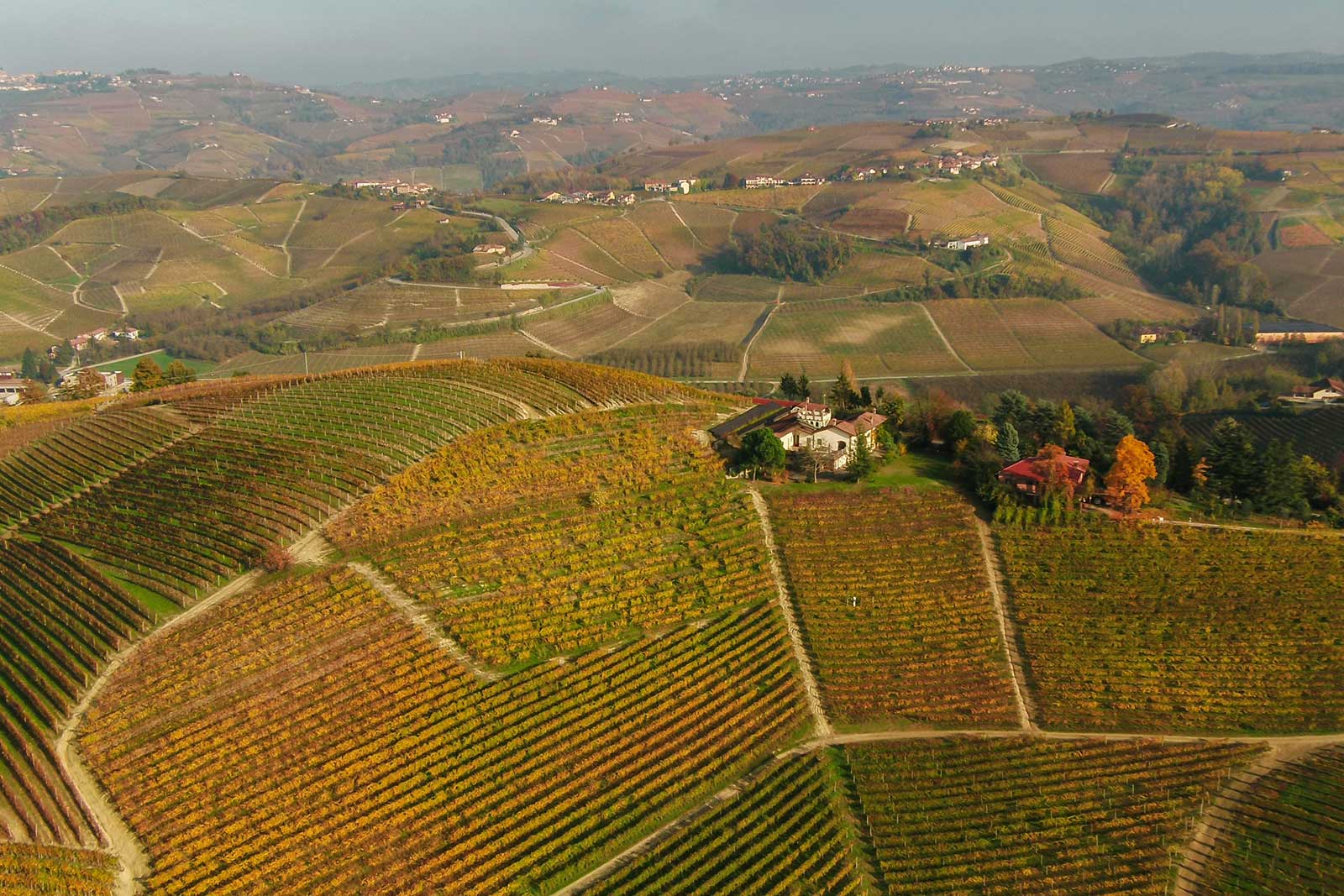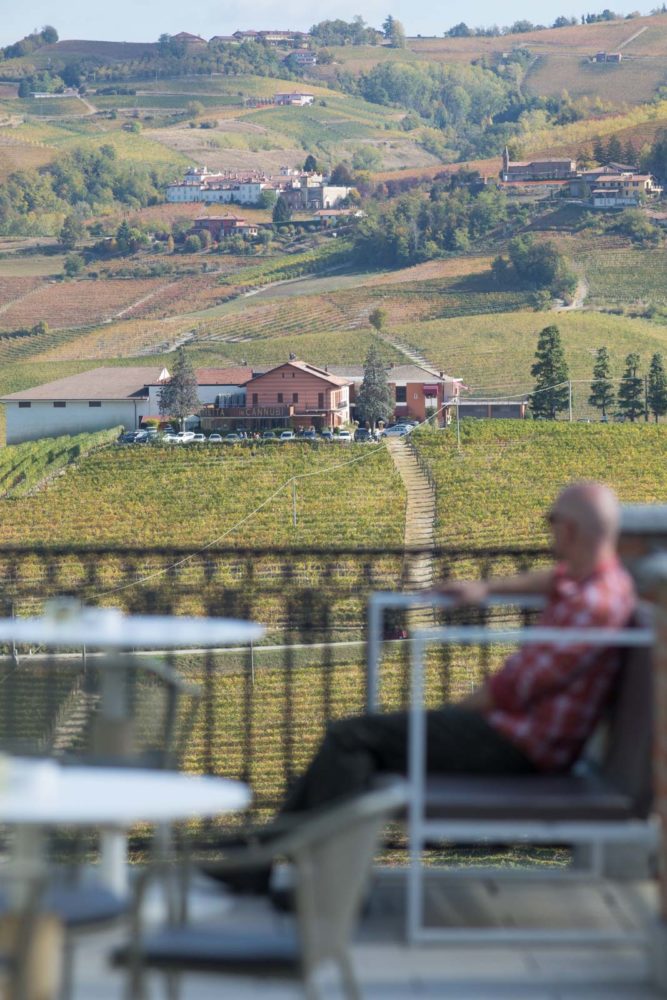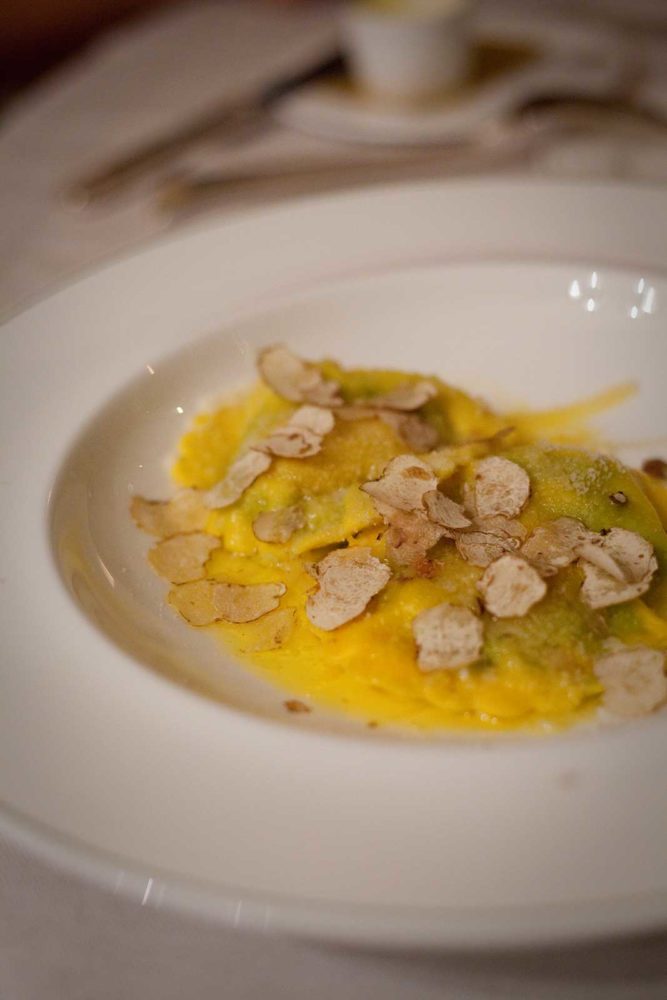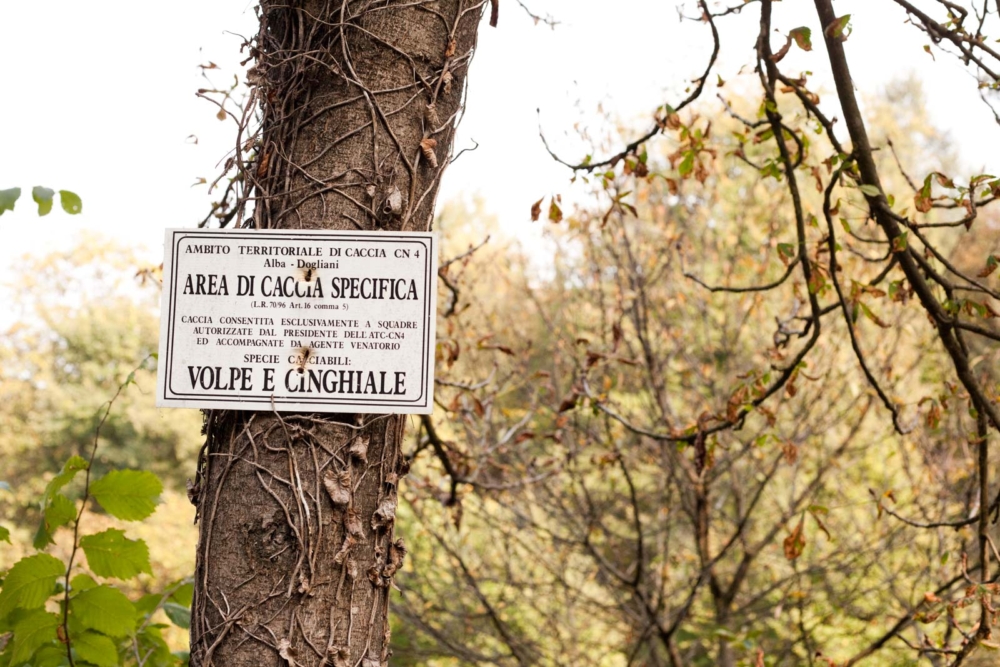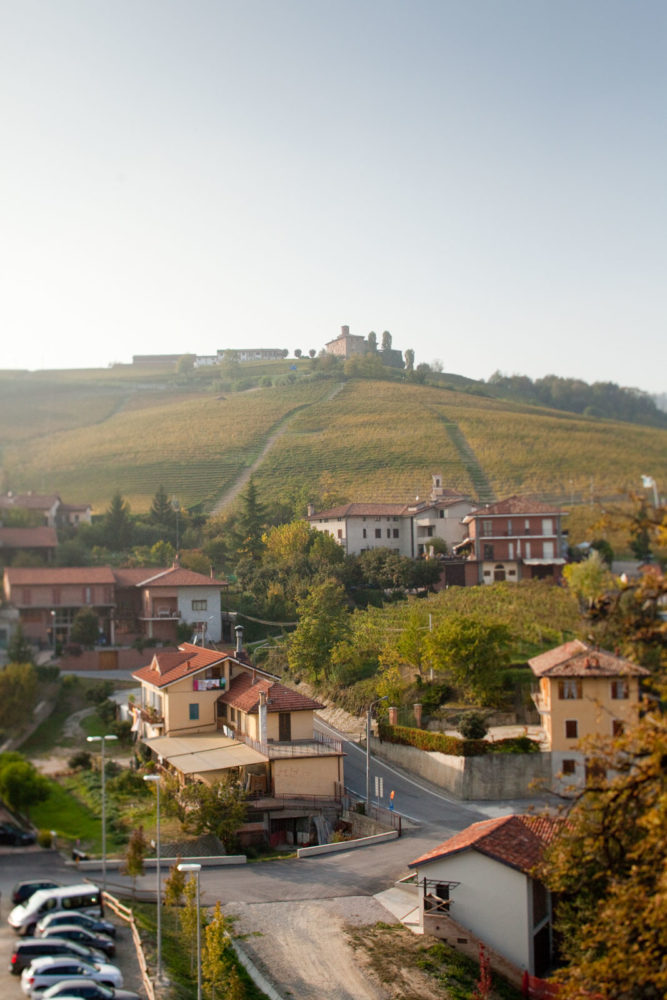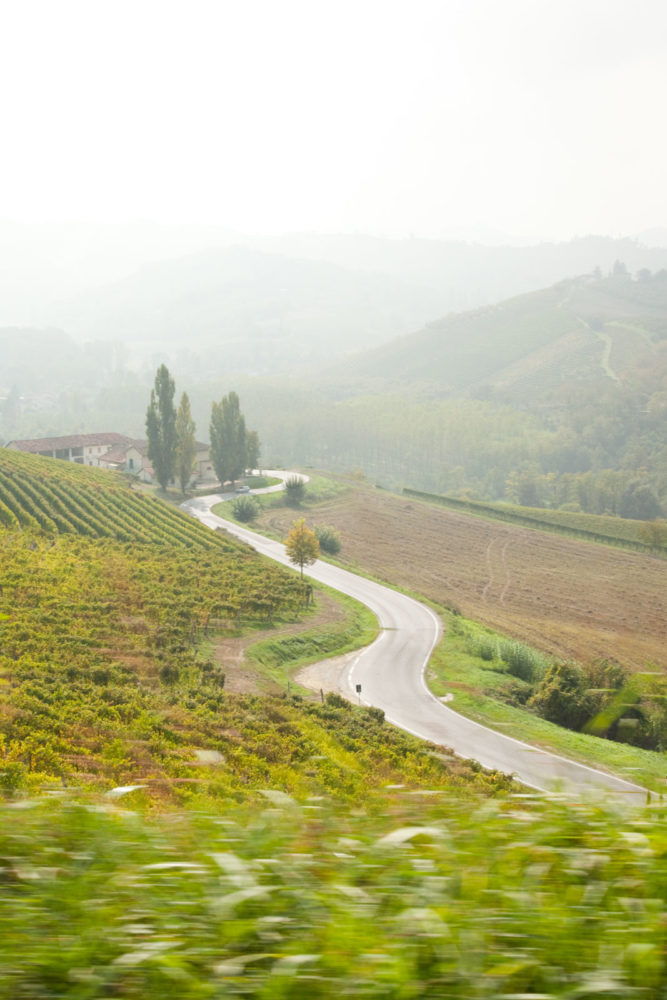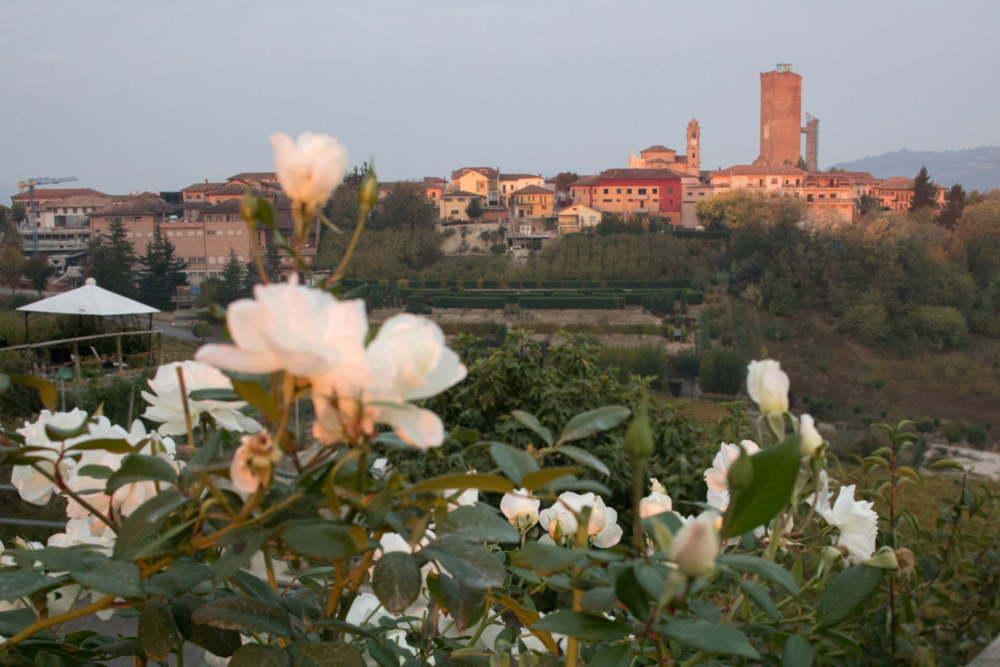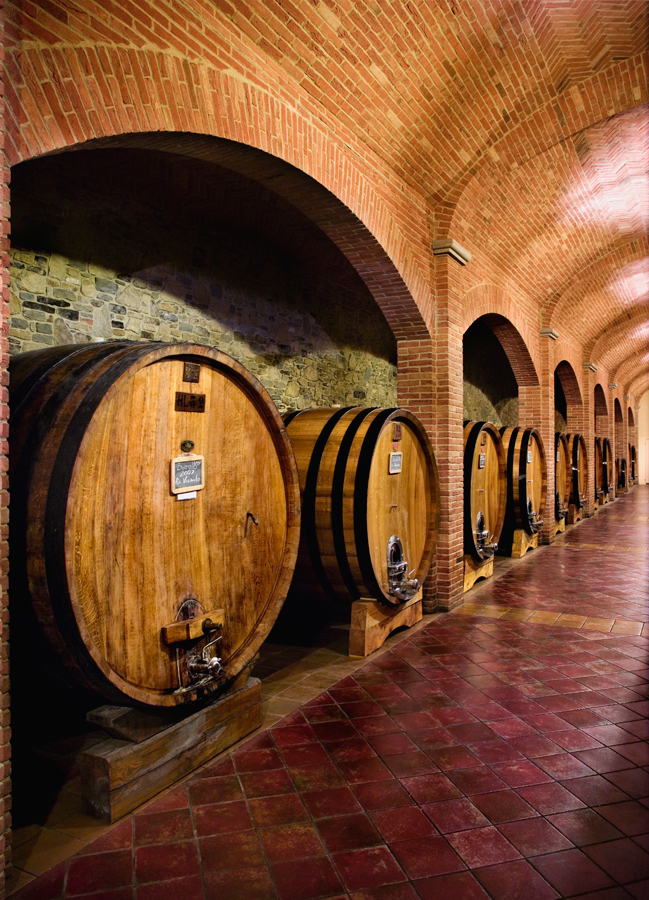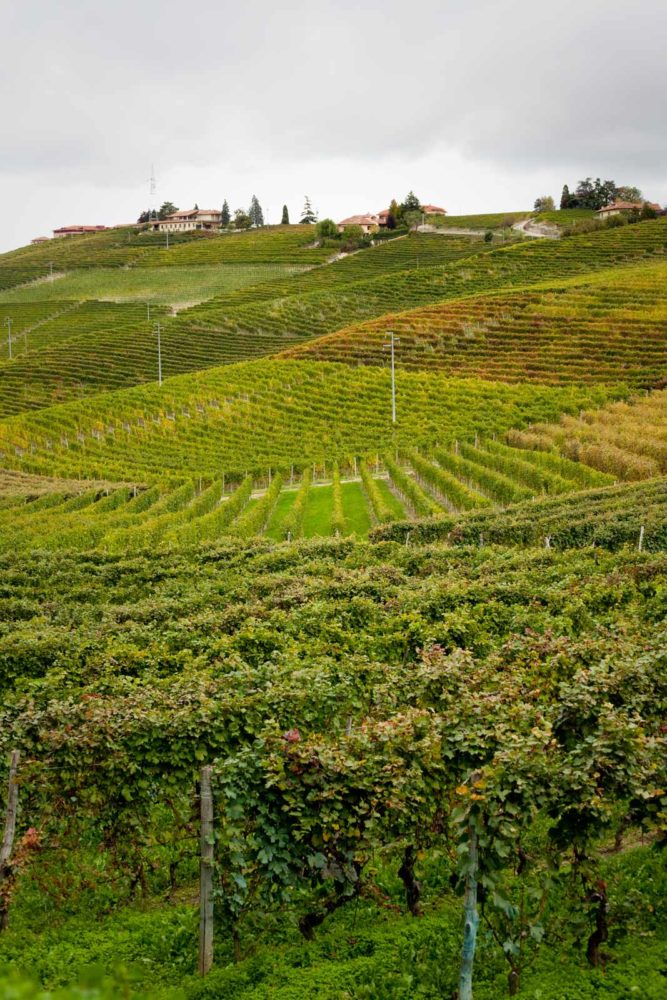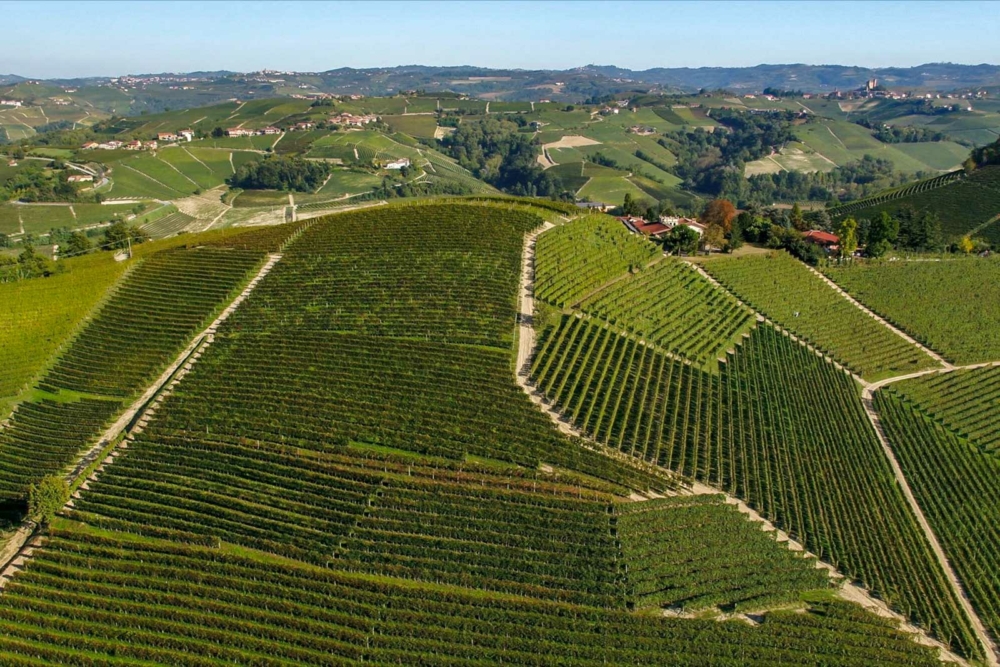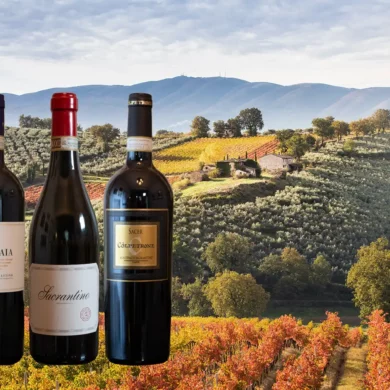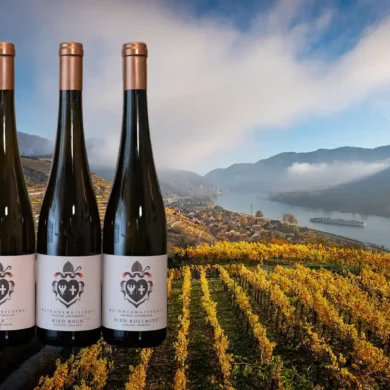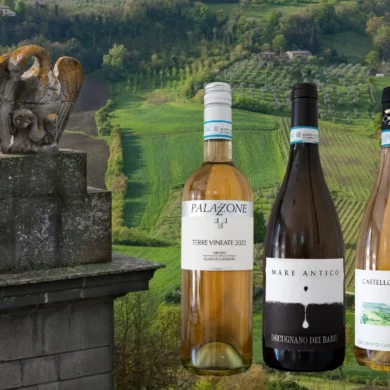There are many ways to define “fine wine.” Perhaps it is a wine that can age, or a wine that will increase in value. Maybe it is just a wine that is perfectly balanced and timeless. However, in terms of drinking culture, it is fairly straightforward: a fine wine is a wine people fuss over. They catalogue it, chart its vintages, obsess over when to open it, how to open it, whether to decant it, and at what exact temperature to serve it. If all this fuss has turned you off to fine wine — yet drinking well is still important to you — then allow Langhe Nebbiolo to step up to the plate.
Langhe Nebbiolo can hold its own at an important feast, yet be affordable enough for you to pick up a second or third bottle so no one goes thirsty. And its tannin profile is rarely severe enough to call for cellar-aging or decanting. Just pop, pour and indulge.
Hailing from the iconic Barolo and Barbaresco zones of Piedmont, Italy (as well as numerous adjacent hillsides), this broad category of red wine showcases the earthy flavors of Nebbiolo with just a hint of the zone’s characteristic gravitas. It can hold its own at an important feast, yet be affordable enough for you to pick up a second or third bottle so no one goes thirsty. And its tannin profile is rarely severe enough to call for cellar-aging or decanting. Just pop, pour and indulge.
“Langhe Nebbiolo could be very, very light and very fresh,” says fifth-generation winemaker Alfio Cavallotto of the eponymous Barolo estate. “Or, as in our case, the wine is a fantastic wine for aging. So there are many, many different styles.”
But, he cautions, “it’s complicated.”
Complicated in a good way. Langhe Nebbiolo’s spectrum of styles stems from the diversity of the winemaking families that have come to define the region. Some are fiercely traditional. Some are experimental. In all cases, this is their introductory wine, not their Dolcetto or Barbera. Because the prestige wines are (a) pricey and (b) not really “everyday” drinking wines, Langhe Nebbiolo has become the wine that announces what these estates are all about. Like a promising opening track on a debut album, they make you want to keep listening.
In a way, by diving into these wines you are learning about the personalities of the Langhe’s winemaking families as much as you are learning about the region and this iconic grape, Nebbiolo.
Navigate This Guide
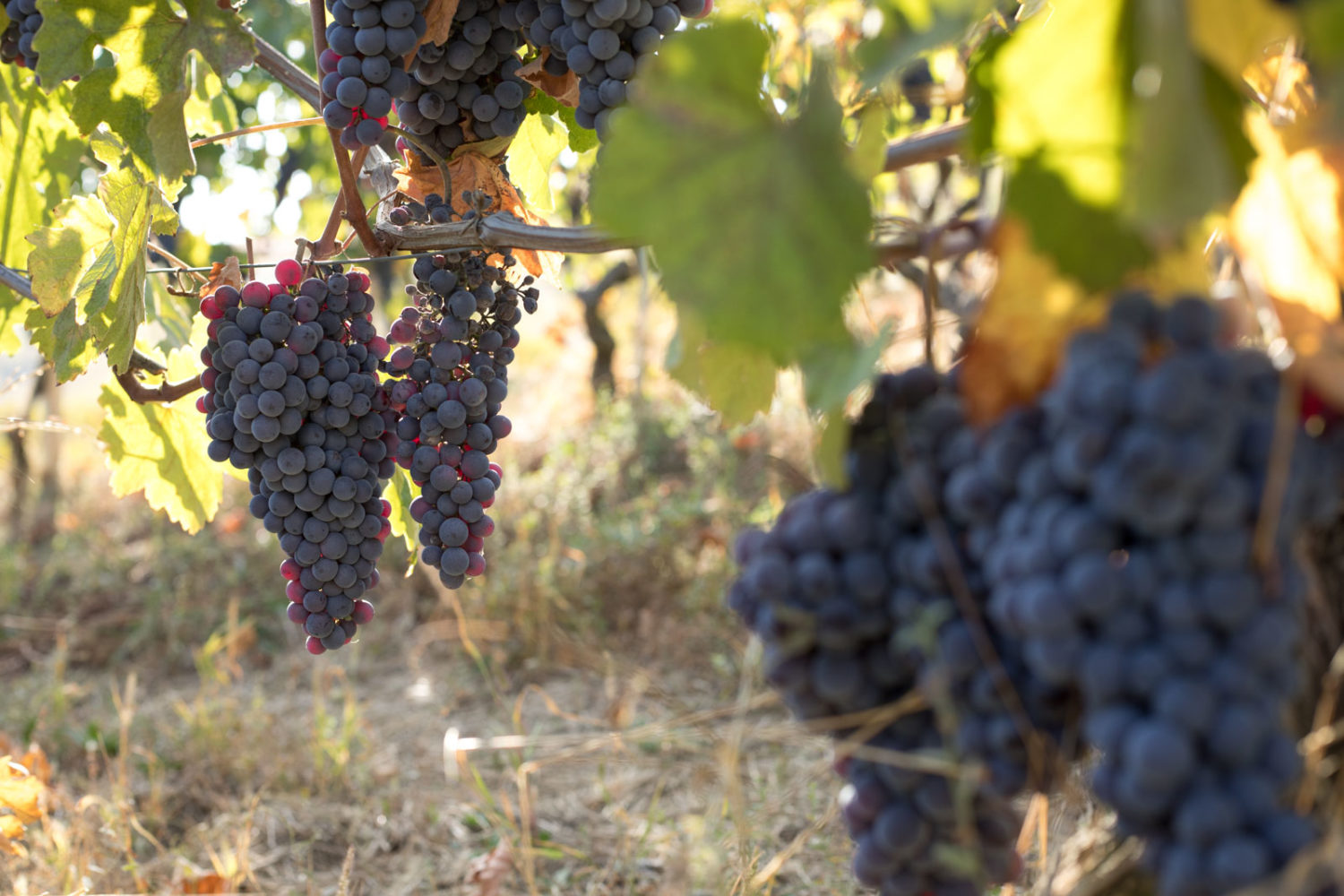
3 Reasons to Try Langhe Nebbiolo
-
- It’s the Benchmark for Affordable Nebbiolo – Few grapes can do what Nebbiolo does in the glass. It is lean yet powerful, richly aromatic and complex, and — once you get familiar with it — there is no mistaking it. In the Langhe Hills, the grape reaches its most intense expression in the form of Barolo. The Langhe Nebbiolo category was designed to give producers a quicker-to-market Nebbiolo wine to sell while the bigger, bolder wines mature in the cellar. By its nature, it is more affordable for consumers.
- Barolo and Barbaresco’s Light-Hearted Little Brother – Let’s be honest: for all of its glory, Barolo and many top Barbaresco can be a bit of a bear in youth. Langhe Nebbiolo wines tend to be more focused on freshness and fruit, without entirely sacrificing the savory and earthy character that the grape (and the region) is known for. You won’t be laying these wines down in your cellar (though you certainly could with some), but you are likely to be drinking them more often given their cost. And as far as dinner guests go, they’re delightful company.
- Meet Some of Italy’s Most Talented Winemakers – No other place in Italy has more winemaking talent per capita than the Langhe. Quality is extremely high. Consistency is the norm. As prices for the region’s top-flight wines inch higher and higher with each vintage, the entry-level Nebbiolo’s from these estates still remain largely within reach. Want to eventually explore a Bartolo Mascarello, G.B. Burlotto, Cavallotto or Vietti Barolo? Or a cru wine from Produttori del Barbaresco? Start your research by sampling a broad selection of Langhe Nebbiolo, and see where it leads you.
About the Appellation and Its Wines
The first thing to know about these wines is what the word Langhe refers to — a series of captivating hills rising south of the city of Alba. Its name is a derivation of “tongues,” likely because of their ridge-like shape.
On the surface, the Langhe is yet another idyllic Italian countryside seemingly designed exclusively for our visual pleasure. However, it does not take long to discover what a treasure trove it is for gastronomes. It’s oak-laden forests foster tartufi bianchi, the rare white truffles of Piedmont that have become, some would argue, the most-coveted food ingredient in the world. Two other culinary claims to fame helped solidify its status as an UNESCO World Heritage Site in 2014: hazelnuts (think of Nutella and the far-superior local versions called gianduja) and grapevines, where Dolcetto, Barbera and most importantly, Nebbiolo are grown for wine production.
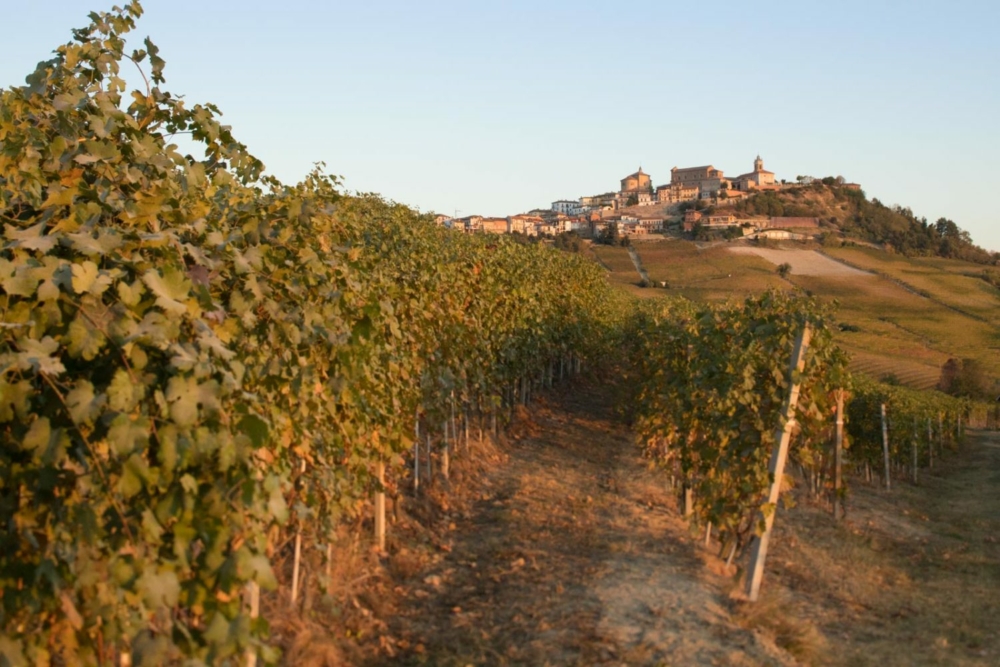
It is in the Langhe that we find the small villages of Barolo and Barbaresco, and the protected appellation-based wines in their name. Made from the beguiling Nebbiolo grape, these highly refined wines can age for decades. Their singularity and complexity have resulted in international acclaim, as well as high prices. Protecting the brand behind these village names are some of the most stringent regulations in Italy. For example, Barolo requires 38 months of aging with 18 of those months spent in an oak vessel.
These are not wines that you typically open at release. In order to tease out their details and optimize your sensory experience, anywhere from five to 10 to 20 years of cellaring the wine is ideal. Which begs the question: what should we drink in the meantime?
The Role of Langhe Nebbiolo in Barolo and Barbaresco
Alfio Cavallotto explained to me that before the creation of the Langhe DOC, producers within the Barolo and Barbaresco zones were more limited in their production options, particularly with their younger vines of Nebbiolo. Young vines can be more vigorous and fruity, but — as Cavallotto noted — they often do not yield the proper structure for Barolo. Replanting vines is a necessity at times, but growers in the area were faced with two unsatisfying options: wait 10 to 15 years to use the fruit from their plantings, or have a less-structured final wine.
It quickly became apparent that a so-called “second wine” category was needed. Popularized in Bordeaux but adapted for use in places like Montalcino, a second wine is essentially a simpler, more quenching version of a prestige wine. Often, they rely on the fruit from younger vines or slightly less-than-ideal vineyard exposures. As the wine industry grew increasingly international in the 1990s, Barolo and Barbaresco winemakers saw a need for such a wine. However, they had another hurdle to clear: few people even knew about Nebbiolo’s varietal character. They may have known about Barolo, and in some cases Barbaresco, but not the grape that made them.
“I remember in the 1980s and ’90s it was very, very difficult to sell Nebbiolo outside of Italy in the foreign markets,” Alfio recollected, speaking of the varietally labeled wines. “But after a while, some customers began to taste some [Langhe Nebbiolo] and they said ‘oh wow.’ It’s not Barolo, but it is a food wine. It is very approachable, very drinkable.”
The Appellation Rules
Piedmont is fiercely committed to the idea of appellations of origin. Producers simply don’t freestyle here like they sometimes do in Tuscany, Sicily or Veneto. As a result, Piedmont does not have an IGT wine category.
That said, the winemakers are not stuck-in-the-past either. As Barolo and Barbaresco began to achieve international fame in the 1980s and 1990s, several other needs emerged for local producers — beyond just what to do with younger vines in Barolo and Barbaresco. Awash in red wines from local, little-known grapes, the temptation to diversify with international varieties — particularly whites like Chardonnay, Sauvignon Blanc and Riesling — prompted calls for new denominations.
“For us producers, we should be free to make what is the best thing,” Alfio stated.
It was with this in mind that the Langhe DOC was created in 1994 to give winemakers more latitude with their winemaking, while preserving the tradition of not only the Barolo DOCG and Barbaresco DOCG, but also Barbera d’Alba DOC and Dolcetto d’Alba DOC.
“In the last 10 years, I think that Langhe Nebbiolo — in my opinion — has become much more important than Nebbiolo d’Alba,” notes Alfio Cavallotto.
The evolution in quality for the former has largely negated the intent of the latter’s more stringent rules.
The Langhe DOC covers 54 communes of the Langhe and Roero hills. Rosso and Bianco designations refer to blends, while varietally focused wines (a minimum of 85% from a single grape) can include the name Langhe plus the grape. All told, there are 23 different forms of Langhe wines with Langhe Nebbiolo being just one.
Here’s where it gets complicated for consumers. There already existed a category for non-Barolo/non-Barbaresco Nebbiolo wines: the Nebbiolo d’Alba DOC. Created in 1970, it was intended for producers with quality Nebbiolo vineyards outside the two prestigious zones. With the creation of Langhe Nebbiolo, these producers suddenly had two paths to pursue: follow the more stringent aging requirements for quality of the Nebbiolo d’Alba DOC, or go with the increasingly more recognized (but more open-ended) regulations of Langhe Nebbiolo DOC.
“In the last 10 years, I think that Langhe Nebbiolo — in my opinion — has become much more important than Nebbiolo d’Alba,” notes Alfio Cavallotto, adding that the evolution in quality for the former has largely negated the intent of the latter’s more stringent rules. “I suspect that in the future we will have just one denomination — Langhe — for everybody.”
The Spectrum of Taste in Langhe Nebbiolo
One way in which the quality revolution of Langhe Nebbiolo has eclipsed that of Nebbiolo d’Alba lies in terroir. Since Langhe Nebbiolo fruit can come from Barolo and/or Barbaresco vineyards, the wines can essentially be “declassified” versions. But what exactly does that mean?
Barolo draws its magic from 170 designated vineyards, while Barbaresco is smaller, and contains 66 named geographical units. These vineyards are mostly planted to Nebbiolo, but there are some exceptions. Since this grape is particularly terroir-sensitive, winemakers have a lot of options to choose from depending on each plot’s sun exposure, drainage and most importantly — for purposes of Langhe Nebbiolo — vine age. As we noted above, the younger vines (typically under 10 years of age) have an exuberance to their fruit that matches better for Langhe Nebbiolo. Meanwhile, the older vines tend to give lower yields but high concentration, more structure and complexity. (Note: Winegrowers are not obliged to use only young-vine fruit in Langhe Nebbiolo. They have the latitude to select older vines if they choose, but typically they are reserved for the highest-level wines).
This would be the first scenario in which Langhe Nebbiolo could function as a declassified Barolo (or Barbaresco, for that matter). The producer simply harvests and vinifies the younger vines separately.
The second aspect is what occurs in the winery, and here is where we find the spectrum of Langhe Nebbiolo stretching. Some producers will allow the grapes to macerate for a short time, then allow the wine to settle in a neutral vessel, such as a stainless-steel tank. The aim? Fruity tones, freshness and a softer texture. In other words, easy consumption.
Meanwhile, other winemakers — such as Cavallotto as well as Vietti and Produttori del Barbaresco, to name just a few — will employ the same extended-fermentation technique (anywhere from 14 to 30 days) that they would use for their Barolo or Barbaresco. The goal here is to extract Nebbiolo’s structure and aromatic complexity as much as possible. Usually, a producer who has chosen this path will also aim to age the wine in an oak vessel of some kind to allow the wine’s piercing acidity and pronounced tannins some time to evolve. New oak and American oak are generally avoided for this reason: they impart too much oaky personality to an already structured wine.
For Cavallotto, their Langhe Nebbiolo is aged in the same type of vessel as their Barolo — large Slavonian oak botti casks — and for the minimum time period required not of the Langhe DOC, but of the Barolo DOCG — 18 months.
When I asked Alfio why they chose to make such a structured version of Langhe Nebbiolo, his response was matter of fact.
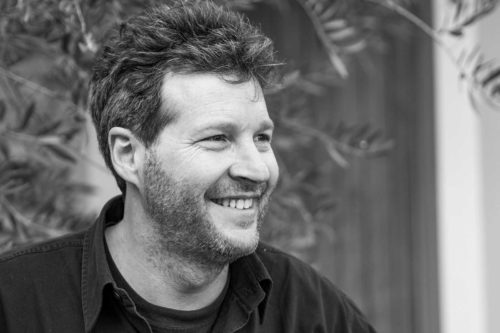
“We are a very historical, old family and we are exactly in the center of Barolo. Speaking about Nebbiolo for us … ” He paused and shrugged a bit, “Nebbiolo is a Barolo.” In other words, what other style could they possibly make that said anything genuine about them?
But he also noted that their lack of vineyard holdings outside Barolo — and even their lack of less-than-prime vineyards inside Barolo — led them to this identity.
“Probably my father and uncle — also my grandfather — they weren’t so great businessmen. We have always been farmers and have never wanted to grow the business much.”
And in many ways, that statement defines the spectrum of Langhe Nebbiolo most precisely. Some are borne out of business ambition and a desire to round out a portfolio of wines. Others are merely a place to bottle the younger grapes from the area’s signature terroir.
In fact, I believe that no other wine in the area transmits the identity of these families more quickly and easily than their Langhe Nebbiolo. For all their majesty, Barolo and Barbaresco take ample time and study to fully appreciate. That’s what makes them so compelling, so irresistible and yes, even so maddening. In short, that’s what makes them a fine wine.
But in the space between those bottles, I’m glad we have Langhe Nebbiolo to play with. It’s the CliffNotes version of getting to know the winemaking families of the Langhe.
Your First Taste
Let’s divide the recommendations into two camps: the “baby Barolo” style and the fresh, varietally focused style. You have probably figured out whose coming for the former …
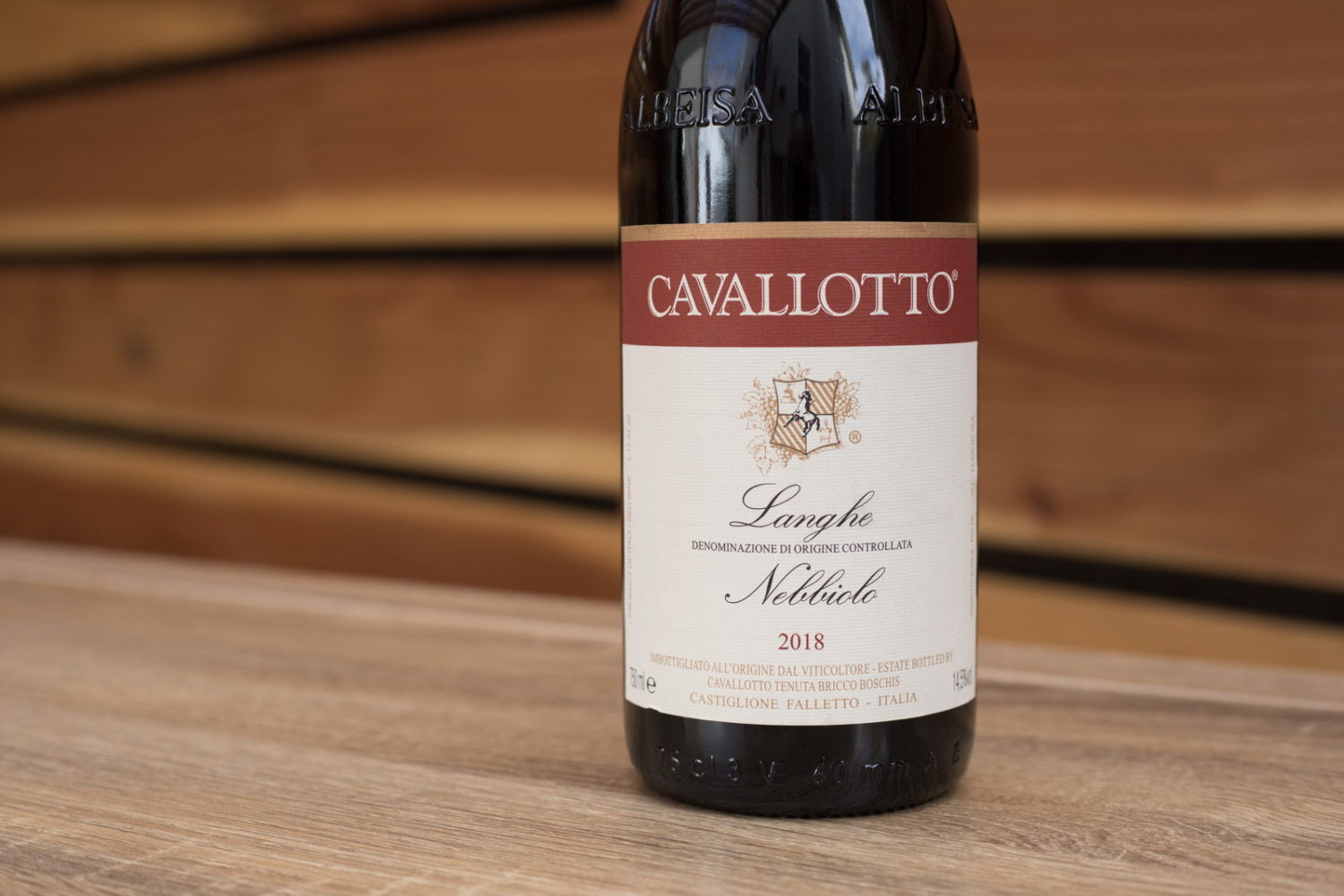
The Baby Barolo
Sometimes in our First-Taste Guide Series, we urge stepping your way up to the great bottles. But because these wines are inherently a stepping stone themselves, I am making an exception.
Never tried a Langhe Nebbiolo, or Barolo and Barbaresco for that matter? Well, you may as well start with the wine that best showcases what you might be stepping toward: the Langhe Nebbiolo from Cavallotto (★★★★★), which is the only Langhe Nebbiolo wine I’ve ever rated with our top-tier classification.
Why is that? Because it satisfies every aspect of what I seek in any Nebbiolo wine: the earthiness, the savoriness, the mysterious fruit, the haunting blue flower and black licorice aromas, and — most of all — the racing acidity that functions like a joyride. As much as Cavallotto’s wine harkens to Barolo, it manages to fulfill the primary requirement of Langhe Nebbiolo, too: easier drinking. It smoothly glided across the palate, unhindered by voracious, youthful tannins or a feeling of tightness. For a first taste, this is one functions as a two-for-one. (Permission granted to try their Barolo next).
Other Langhe Nebbiolo that strive for near-DOCG level goodness include the Langhe Nebbiolo from Produttori del Barbaresco (which macerates for 20 days), Paitin (30-35 days), Guido Porro’s “Camilu” (20-25 days) and the “Perbacco” Langhe Nebbiolo by Vietti, which is a series of cru vineyard wines from both Barolo and Barbaresco (highly unusual) that are blended together after 24 months in oak.
The Fresher, Fruit-Forward Style
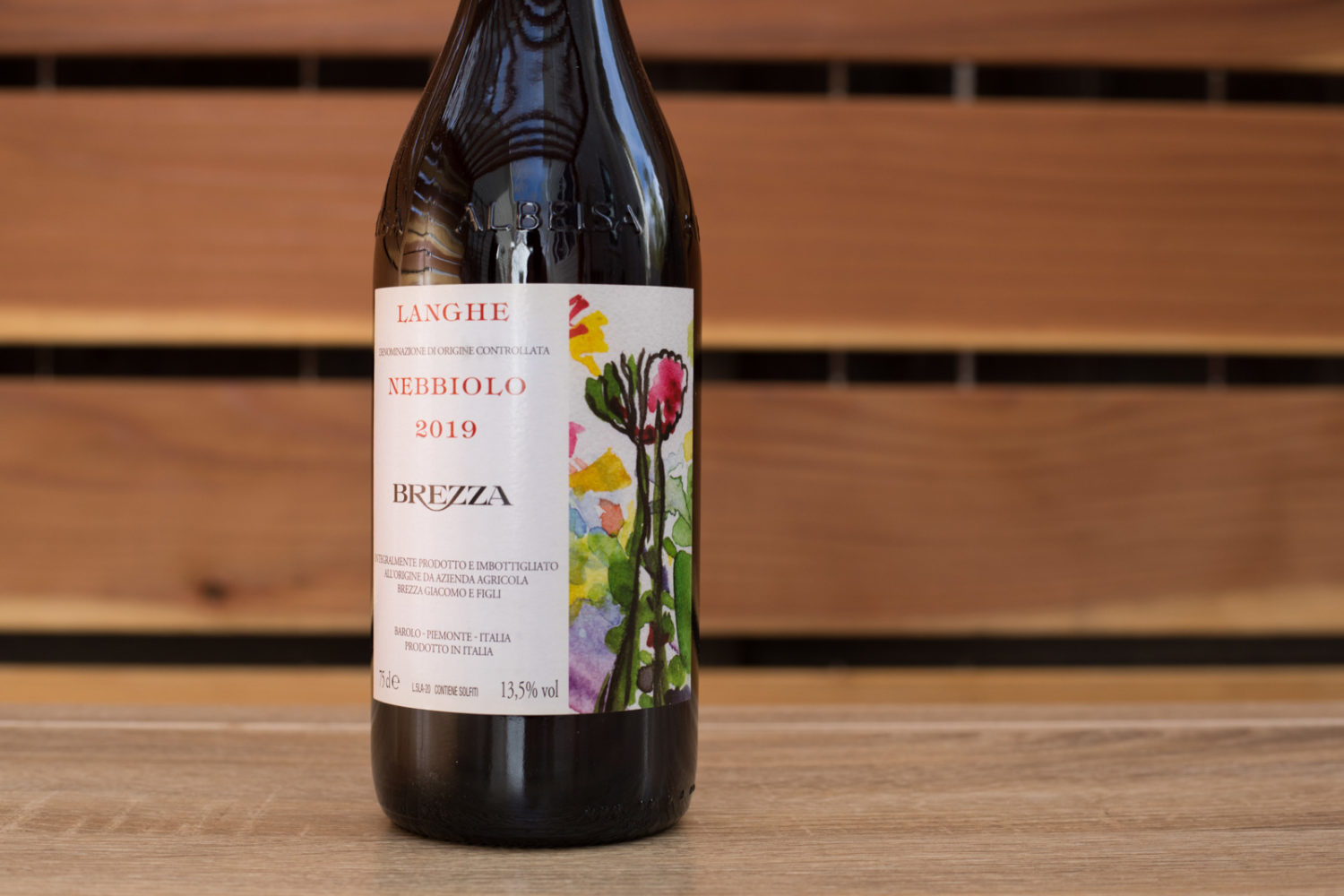
Another Barolo estate of exceedingly high quality is Brezza. Winemaker Enzo Brezza shepherds his wines into some of the most elegant expressions within the denomination. His family’s Langhe Nebbiolo (★★★★ 3/4) macerates for only 11 days and it never sees oak, instead aging a mere 8 months in stainless steel and concrete tanks to preserve the fruitier, fresher side of Nebbiolo. Like Cavallotto, the vineyards are exclusively from the Barolo zone, but the aim here is not at all to mimic the namesake wine. The overall effect is quite different, and appeals to a different context and mood: you could even get away with chilling this wine slightly and drinking it down on a summer’s night.
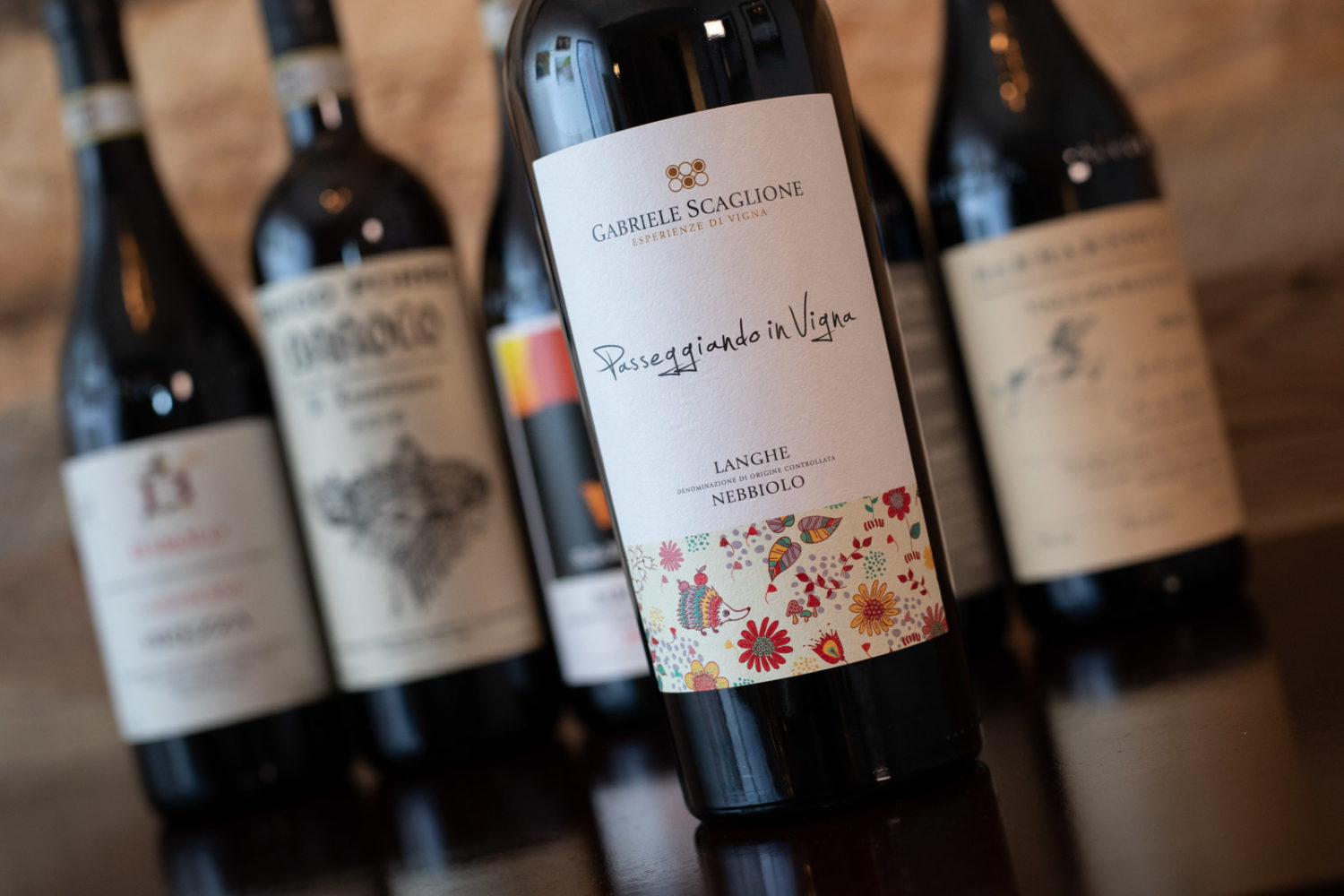
Other delicious and light Langhe Nebbiolo to pursue include “Passeggiando in Vigne” Langhe Nebbiolo (★★★★ 1/2) from Gabriele Scaglione, Elvio Cogno’s Montegrilli Langhe Nebbiolo (★★★★ 1/2), and perhaps the lightest Langhe Nebbiolo there is, G.D. Vajra’s “Claré J.C.” Langhe Nebbiolo (★★★★ 1/2) — a short maceration claret-style Nebbiolo which is completely unusual for the category, and which shows just how far the spectrum has begun to stretch. When held up to Cavallotto’s Langhe Nebbiolo, it is quite a contrast (you can read more about it in our Nebbiolo Fan Club column devoted to winemaking techniques). Interestingly enough, the Vajra family is every bit as traditional as the Cavallottos, they just wanted to experiment and say something very different with this wine. And in that, we find why Langhe Nebbiolo is such a great category to explore. The surprises are endless.
Top photo: The Bricco Boschis crew in Castiglione Falletto, where Cavallotto operates. ©Cavallotto
Note: The wines profiles in this article were largely acquired via samples requests of the winery’s respective importers. Learn more about our editorial policies.

